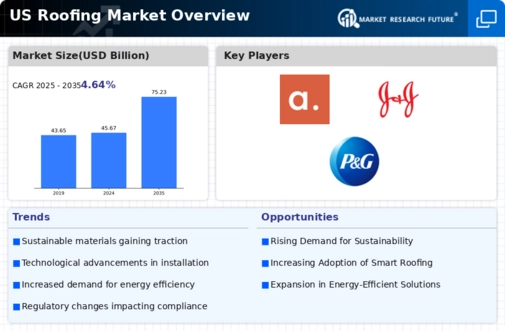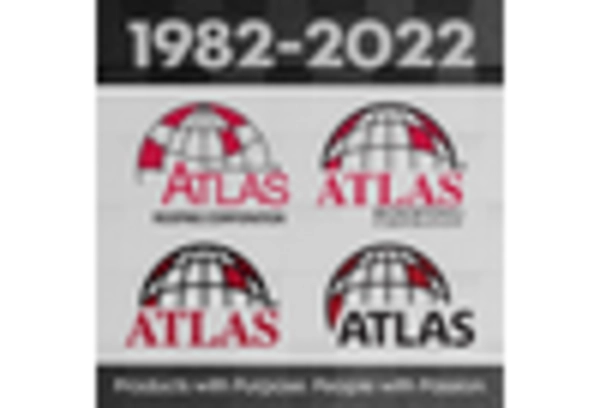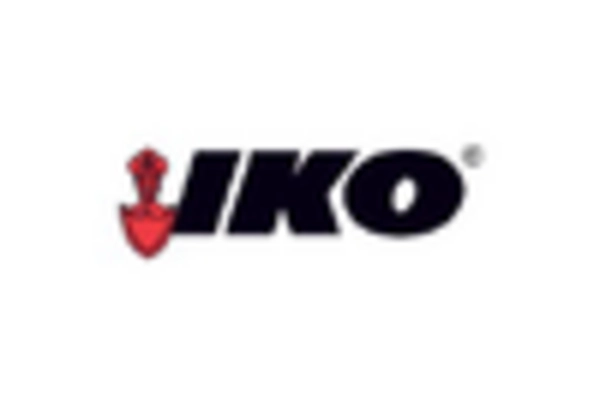Rising Construction Activities
The ongoing expansion in the construction sector appears to be a primary driver for the roofing market. As new residential and commercial buildings are erected, the demand for roofing materials and services is likely to increase. According to recent data, the construction industry in the US is projected to grow at a CAGR of approximately 4.5% through 2026. This growth is expected to translate into a heightened need for roofing solutions, thereby bolstering the roofing market. Additionally, renovations and upgrades to existing structures further contribute to this demand, as property owners seek to enhance the durability and aesthetics of their roofs. Consequently, the roofing market is positioned to benefit from these trends in construction activity.
Regulatory Compliance and Building Codes
The roofing market is significantly influenced by evolving regulatory frameworks and building codes. Stricter regulations regarding energy efficiency and safety standards compel builders and homeowners to invest in compliant roofing solutions. For instance, the implementation of energy-efficient roofing materials can lead to reduced energy consumption, aligning with state and federal initiatives aimed at sustainability. As of 2025, approximately 30% of new roofing installations are expected to meet these enhanced energy standards. This regulatory landscape not only drives innovation within the roofing market but also encourages manufacturers to develop products that comply with these stringent requirements, thereby fostering market growth.
Increased Awareness of Environmental Impact
Growing awareness regarding environmental sustainability is influencing consumer choices in the roofing market. Homeowners and builders are increasingly opting for eco-friendly roofing materials, such as recycled shingles and green roofs, which contribute to reduced carbon footprints. This shift is reflected in market data, indicating that the demand for sustainable roofing solutions has surged by approximately 25% over the past five years. As consumers prioritize environmentally responsible options, manufacturers are compelled to innovate and offer products that align with these values. Consequently, this trend is expected to propel the roofing market forward, as sustainability becomes a key consideration in roofing decisions.
Economic Growth and Increased Disposable Income
The overall economic climate and rising disposable incomes in the US are likely to serve as significant drivers for the roofing market. As the economy continues to recover and grow, consumers are more inclined to invest in home improvements, including roofing upgrades. Data suggests that household disposable income has increased by around 3% annually, allowing homeowners to allocate more funds towards enhancing their properties. This trend is particularly evident in the residential sector, where homeowners are seeking to improve both the functionality and aesthetics of their roofs. As a result, the roofing market stands to benefit from this economic uplift, with increased spending on roofing solutions.
Technological Advancements in Roofing Materials
Innovations in roofing materials are emerging as a crucial driver for the roofing market. The introduction of advanced materials, such as synthetic roofing products and reflective coatings, enhances the performance and longevity of roofs. These materials often come with warranties extending up to 50 years, appealing to both residential and commercial property owners. Furthermore, the market for cool roofing solutions, which can reduce energy costs by up to 20%, is gaining traction. As consumers become more aware of the benefits of these technologies, the roofing market is likely to experience increased demand for high-performance roofing options, thus driving overall market growth.

















Leave a Comment